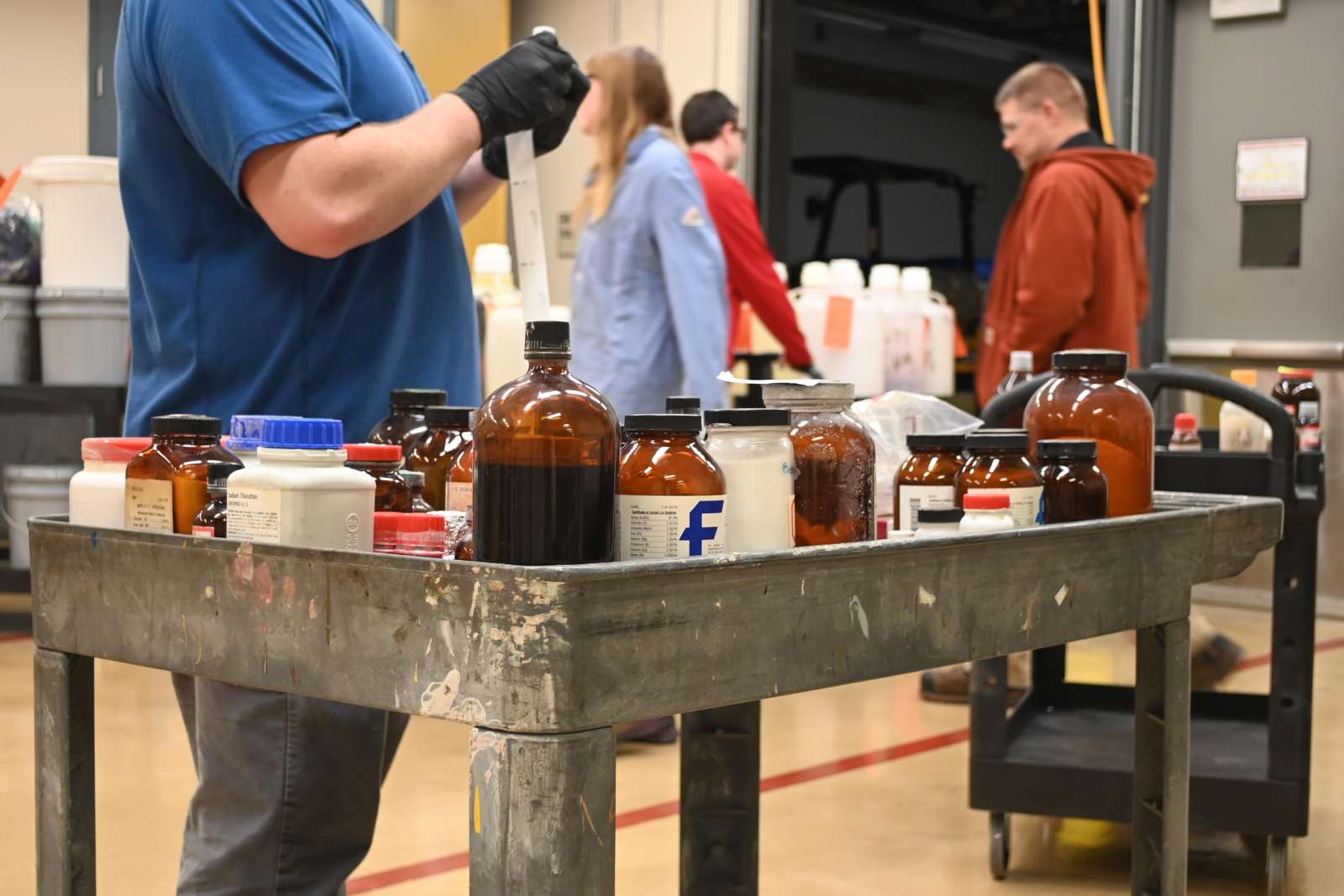Radioactive material users must follow several specific procedures regarding radioactive waste generated in their laboratories. Request a radioactive waste collection by submitting an online waste removal request form.
Radioactive waste is separated and labeled by its radionuclide half-lives:
- Very short-lived – half-lives less than 15 days
- Short-lived – half-lives between 15 and 90 days
- Long-lived – half-lives between 90 and 365 days
- Very long-lived - half-lives greater than 365 days
All radioactive waste must be bagged, labeled, and placed in the laboratory's designated waste accumulation area before requesting a waste collection. Solid and liquid waste containers, secondary containment, plastic bags, and radioactive waste labels are supplied by EH&S.
EH&S will provide guidance for radioactive material or devices that do not fit established disposal processes. Items may include equipment with embedded radioactive sources, contaminated equipment, legacy materials, and materials with multiple hazards.
Solid radioactive waste
Solid radioactive waste must be separated and labeled as combustible (plastics, paper, etc.) or noncombustible (glass, metal, etc.). Uncommon combustible materials include aluminum foil and soil.
Aqueous liquid radioactive waste
Liquid radioactive waste must be separated and labeled according to whether it is aqueous (miscible in water) or bears solvents. Liquid waste can contain a mix of radionuclides. Aqueous liquid waste containers require secondary containment.
Organic liquid radioactive waste
Solvent-bearing waste may only contain 3-H, 14-C, 137-Cs, and 60-Co radionuclides. Solvent-bearing wastes containing other radionuclides require the approval of the RSO before generation.
Flammable solvent-bearing wastes, such as those containing toluene or xylene, must be placed in containers specifically approved for flammable liquids. Original solvent containers are recommended for all organic liquid wastes.
Treat organic liquid radioactive waste as chemical waste with a radioactive hazard, following the guidelines for chemical waste and attaching a radioactive waste tag. Organic, liquid radioactive waste containers require secondary containment.
Source vials
Source vials and source vial storage containers must be bagged separately from other solid waste. Submit radioactive-material-vial consignment sheets with the source vials. To avoid contaminating the vial consignment sheets, place the consignment sheets near the waste bag. Do not place the consignment sheets inside the waste bag with the vials.
Lead (Pb)
EH&S will collect lead shielding and lead aprons for recycling.
Animal tissues and carcasses
Radioactive animal carcasses, viscera, and blood must be sealed in a plastic bag or container, labeled, and frozen before removal by EH&S. Laboratory personnel must notify EH&S of any issues with the waste (animal size, fluid leakage, putrefaction, biohazard, etc.) and be available to assist with removal.
Scintillation vials
All scintillation vials must be emptied into a liquid waste container and recapped before disposal. Plastic vials containing biodegradable cocktails and 14C or 3H do not need to be emptied.
Radioactive equipment
Visit our Laboratory Equipment Disposal page for more information about disposing of equipment with embedded sources and equipment used with radioactive material.
